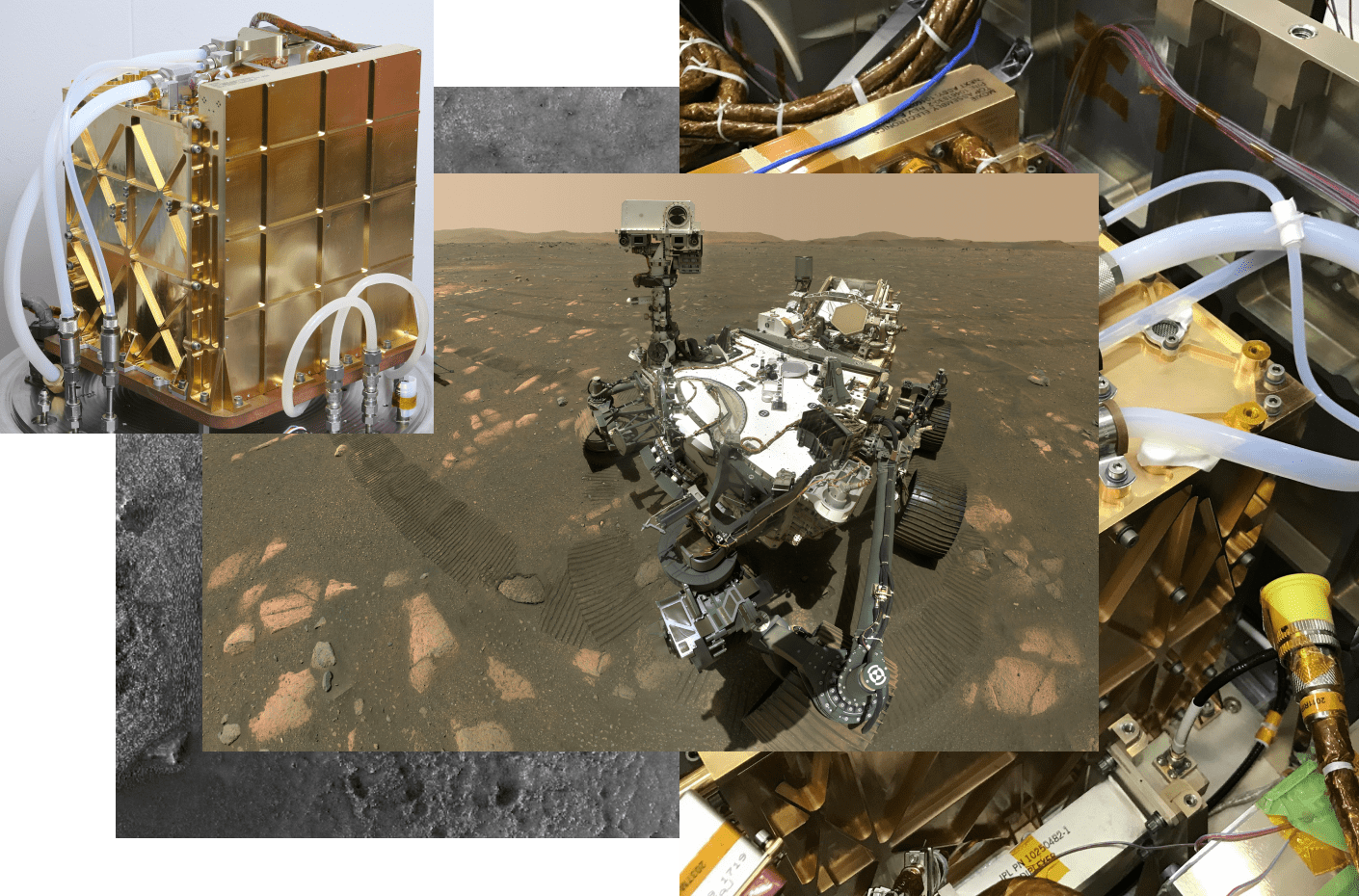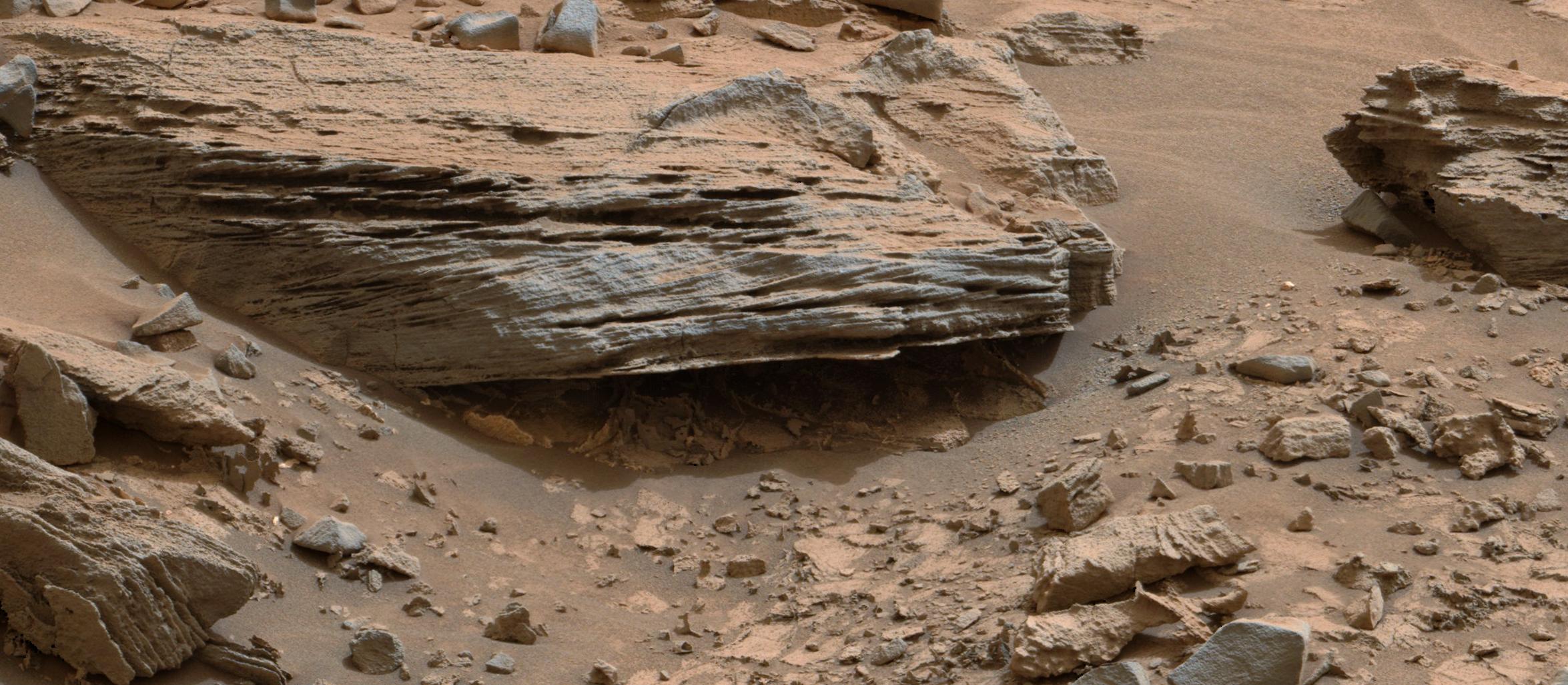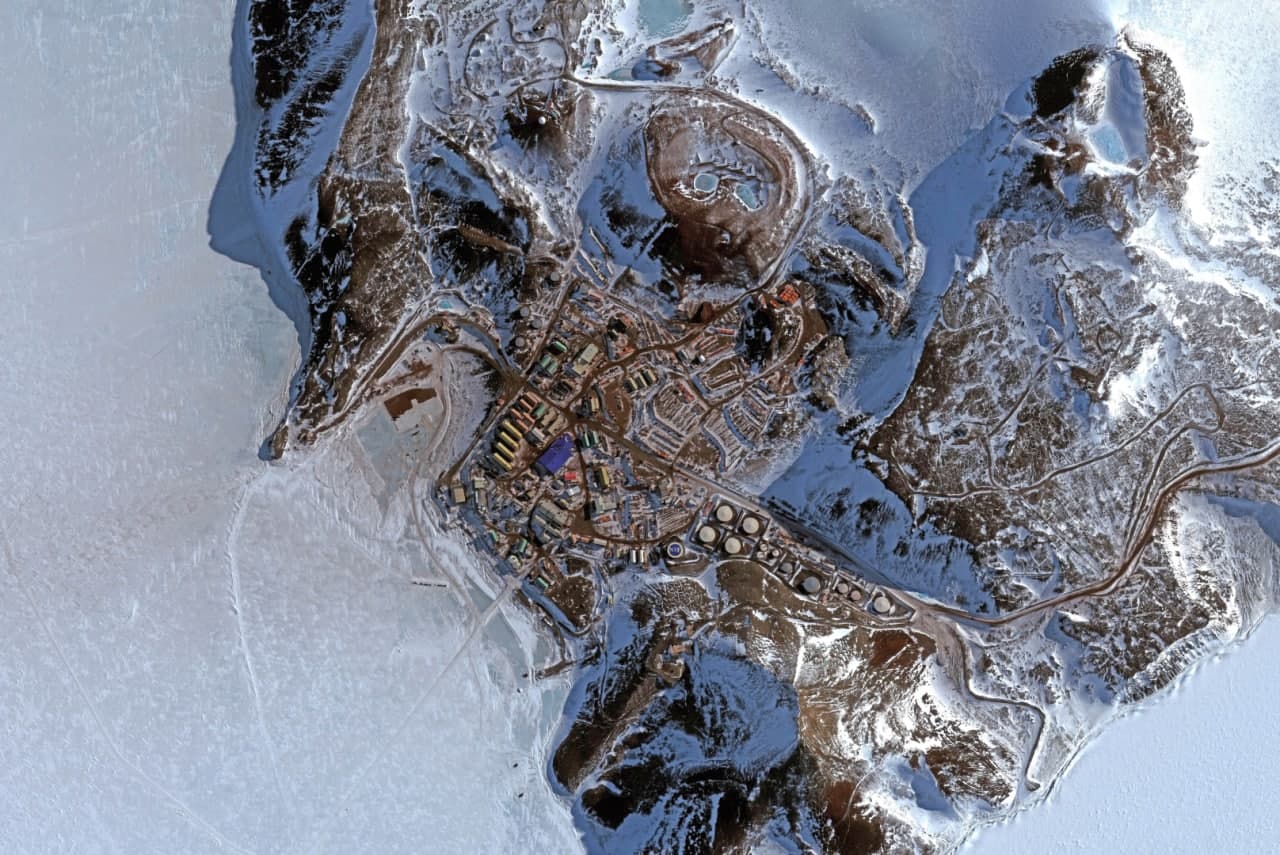




s intimidating as sending humans to another planet for the first time may be, getting there is only half the challenge. The big problem is how humans can exist on the surface of a planet with an unbreathable atmosphere, cosmic radiation, and freezing surface temperatures millions of miles from home.
We wanted to know how you would go about preparing an alien planet for human habitation, so we spoke to two experts, Massachusetts Institute of Technology professor Michael Hecht and NASA engineer Asad Aboobaker, to find out how to keep astronauts alive on a planet that wants to kill them.
This article is part of Life On Mars – a 10-part series that explores the cutting-edge science and technology that will allow humans to occupy Mars.
.svg)
.svg)
.svg)
.svg)
There’s an essential time lag in sending people to the red planet. Because of the orbits of Earth and Mars, the easiest way to get from one planet to the other is by using a trajectory called a Hohmann transfer orbit, in which a craft moves in an orbit that gradually spirals outward.
“This is because of the way the planets rotate,” Hecht explained. “Earth is inside the orbit of Mars, and it rotates faster than Mars, so it laps it a couple of times. A Mars year is almost two Earth years.”
“So you have to time the launch. And there’s a window every Mars year — every 26 months, at a time called a Mars opposition when Mars is close to the Earth. So every 26 months, you have the opportunity to launch a spacecraft to Mars in this optimal orbit. … So the plans for Mars are to send the infrastructure first, and then 26 months later we’ll send the crew.”
Sending infrastructure doesn’t just mean making sure there is air for the astronauts to breathe and food for them to eat. It also means sending and constructing a power plant, a habitat, rovers, and an ascent vehicle to allow the astronauts to leave once their mission is over.





The first big issue to address in setting up a Mars base is the production of oxygen. When you hear about producing oxygen on Mars, you likely think of the most basic human need: To have air to breathe. And certainly, we do need to find a way to produce a breathable atmosphere in a contained Mars habitat. But this requires only a relatively small amount of oxygen compared to the big demand — that of propellant for the rocket that will launch astronauts off the surface.
“We’re trying to make rocket propellant,” Hecht said. “We’re not trying to make fuel, we’re trying to make the part of the chemical reaction that on Earth we never think about.” Here on Earth, when you burn gasoline in your car engine, you use several times worth the weight of the fuel in oxygen to create that reaction. The same with burning a log in a fireplace.
.svg)
.svg)
.svg)
.svg)

However, “if you go somewhere there isn’t free oxygen, you need to take it with you,” Hecht added.
Modern rockets have liquid oxygen tanks that provide this propellant, and they form a considerable chunk of the weight at launch.
“We would need close to 30 metric tons of oxygen to power that rocket to take those astronauts off the planet and into orbit,” Hecht said. “And if we have to take that 30 metric tons of oxygen with us to Mars, it’s going to push the whole mission a decade back. It’s much easier to send an empty tank and fill it up with oxygen there.”
To create oxygen on Mars, Hecht and his colleagues are working on a concept called in-situ resource utilization (ISRU). Essentially, that means making use of what is already on Mars to create what we need.
They have built an experiment called MOXIE (Mars Oxygen In-Situ Resource Utilization Experiment), which was handily carried to Mars along with the NASA Perseverance rover that successfully landed in February 2021. MOXIE is effectively a miniature version of a potentially much bigger device that takes in carbon dioxide, which is plentiful in the martian atmosphere, and produces oxygen.

That might sound complicated, but in fact, the device is similar to something well-known here on Earth. “MOXIE is very much like a fuel cell,” Hecht said. “It’s almost identical. If you took a fuel cell and reversed the two wires coming in, you would have an electrolysis system. That means if this were a fuel cell, you’d have a fuel and an oxidizer that turn out a stable molecule. If it were carbon monoxide as the fuel and oxygen, it would make carbon dioxide. You also get out electricity.
.svg)
.svg)
.svg)
.svg)
“If you run it in reverse, you have to put in carbon dioxide, and you have to put in electricity. But you get out carbon monoxide and oxygen. This is how we know how to do this.”
This takes in carbon dioxide, which is plentiful in the martian atmosphere, and produces oxygen.
This seemingly simple idea is radical because it tackles a problem that barely anyone outside of the space community thinks of as a problem: Producing oxygen. “Nobody wants to make oxygen on Earth — we have no reason to,” Hecht said. “We have plenty of it everywhere. But we have a lot of knowledge due to fuel cells.”





Understanding the chemical principles of creating an oxygen machine is one thing, but designing and building a version that can fit into a rover is another. Aboobaker, a thermal engineer for MOXIE at NASA’s Jet Propulsion Laboratory (JPL) who has been involved in the MOXIE project throughout its development, explained how the experiment was built and some of the challenges the JPL team had to tackle.
.svg)
.svg)
.svg)
.svg)
“The main resource constraint we had, besides mass and the small space to work with, was energy,” he said. “The rover has a radioisotope thermoelectric generator, which is a nuclear power source. So people think that the rover is nuclear-powered, but it’s not. It’s battery-powered, with a nuclear trickle charger.”
That means that the researchers have to be extremely careful with how much power they use so as not to drain the battery. The entire Perseverance rover runs on only 110 watts, which is just a little bit more than a bright light bulb.
In turn, an experiment like MOXIE can only use a small amount of power. “So that set a limit on how much heater power we could use to heat it up, how much power the compressor — which blows the gas into the system — can draw, and how long we can run for,” Aboobaker said.
That’s why the version of MOXIE traveling on Perseverance is so small, even though the system would work just as well or even better at a larger scale.
But designing the equipment is only one side of the experiment — the other side is checking whether it actually works on Mars. Even with a concept that works solidly here on Earth, there can be unexpected consequences of alien environments, from the thin atmosphere affecting how heat is transferred, to bearings wearing in unexpected ways due to lower gravity and unfamiliar dust. That’s why the JPL engineers will soon be collecting data from MOXIE to see how it fares in a real martian environment.
“In a lot of ways, MOXIE doesn’t really take science data,” Aboobaker said. Compared to science instruments like telescopes or spectrometers, used to analyze rock samples, the data gathered from MOXIE is relatively simple. “What we have is almost like engineering telemetry data. We measure voltages and currents and temperatures, things like that. That’s our data, and the data volume is actually quite small. You could almost fit it on a floppy disk.”
That means that the team can get very quick feedback on whether the system is working as intended — within a few days. Unlike other Perseverance instruments, for which data analysis takes weeks, months, or even years, MOXIE is a practical demonstration as much as an experiment.
“In a lot of ways, what we’re doing is not science, it’s technology,” Aboobaker said. “Mostly, we just want to know if it works. And, if we wanted to scale it up in the future, what are the kinds of things we’d need to do to do that?”
If MOXIE is successful, it can demonstrate how the principle of ISRU can work on Mars. Then it’s relatively simple to scale the project up and create a full-scale version that could produce oxygen at a much higher rate. And the good news is that a larger version would be more efficient and could produce a considerable amount of oxygen without requiring too much power.
With oxygen sorted, we could move onto the other kinds of resources we’d need for humans living on Mars. Another of the most essential resources we would need to establish a base on the planet is water. Not only for humans to drink, but also because water (or hydrogen) and carbon dioxide can be combined into a huge variety of useful chemicals.

“The idea in the short term is that we want to do a certain amount of autonomous ISRU to make our missions feasible,” Hecht said. “Once we have a base on the planet, like the McMurdo Station in Antarctica or like the International Space Station, then you can think about way more aggressive types of ISRU, like mining ice.
“A lot of people feel we should be mining for ice autonomously. But I say no, it’s not worth the effort. Ice is a mineral, meaning you have to prospect for it, you have to dig it up, you have to purify it. It will be easier to just bring it. Something like MOXIE, however, is a mechanical tree. It breathes in carbon dioxide and breathes out oxygen.”
Compared to hunting down resources via mining, MOXIE is much simpler, Hecht argues. “It doesn’t have to go anywhere, it doesn’t have to look for anything. Those are the kinds of IRSU methods that are really practical in the short term. You defer the rest until you have people on the surface who can do more complicated tasks.”
.svg)
.svg)
.svg)
.svg)

Mars does have plenty of water ice, but it is located at the poles, while most Mars missions want to focus on landing at the equator, which is like a desert. Current concepts to tackle this issue include the idea of global ice mapping, where locations of smaller amounts of ice could be mapped for future use.
Another option is to extract water from the minerals in the Martian soil. “There are minerals like gypsum and Epsom salts that are sulfates and attract a lot of water,” Hecht explained. “So you could dig them up and bake them and get the water out. You could mine the soil for water, which is fairly plentiful.”
But Mars doesn’t only have similar materials to those we find here on Earth. It also has large quantities of a chemical called perchlorate (ClO4), which is hazardous to human health and only found in small quantities on our planet. Despite being toxic, this substance could be extremely useful due to its chemical properties, as it is used in things like solid rocket boosters, fireworks, and airbags.
“On Mars, most of the chlorine in the soil turns out to be perchlorate,” Hecht said. “It makes up almost 1% of the soil. And it has a tremendous amount of energy. When you release oxygen atoms from the ClO4 to make Cl, it releases a tremendous amount of energy. I’ve always thought that would be a great resource to harvest.”
The problem with this is that these applications are all explosive, and controlling the reaction of ClO4 is challenging. However, there is a system that has the potential to release the energy gently, using a biological reactor.
“Microbes can eat this stuff and produce energy,” Hecht explained. “And people have actually built these sorts of biological reactors, which are tanks of bacteria that digest some substance and extract energy from it.
“So I have this vision of a biological reactor in the back of a rover, and the astronaut gets in and drives around. And when the power gauge gets low, they get out and start shoveling soil into a hopper in the back, and the microbes eat the soil and make energy and the astronaut can keep driving. It’s a crazy idea but that’s my pet resource utilization concept.”
Setting up a human presence on Mars will come with a huge range of challenges, many of which are linked to one essential requirement: Power. Future Mars residents will need a constant supply of electricity to keep them safe and keep the mission running.
By Georgina Torbet